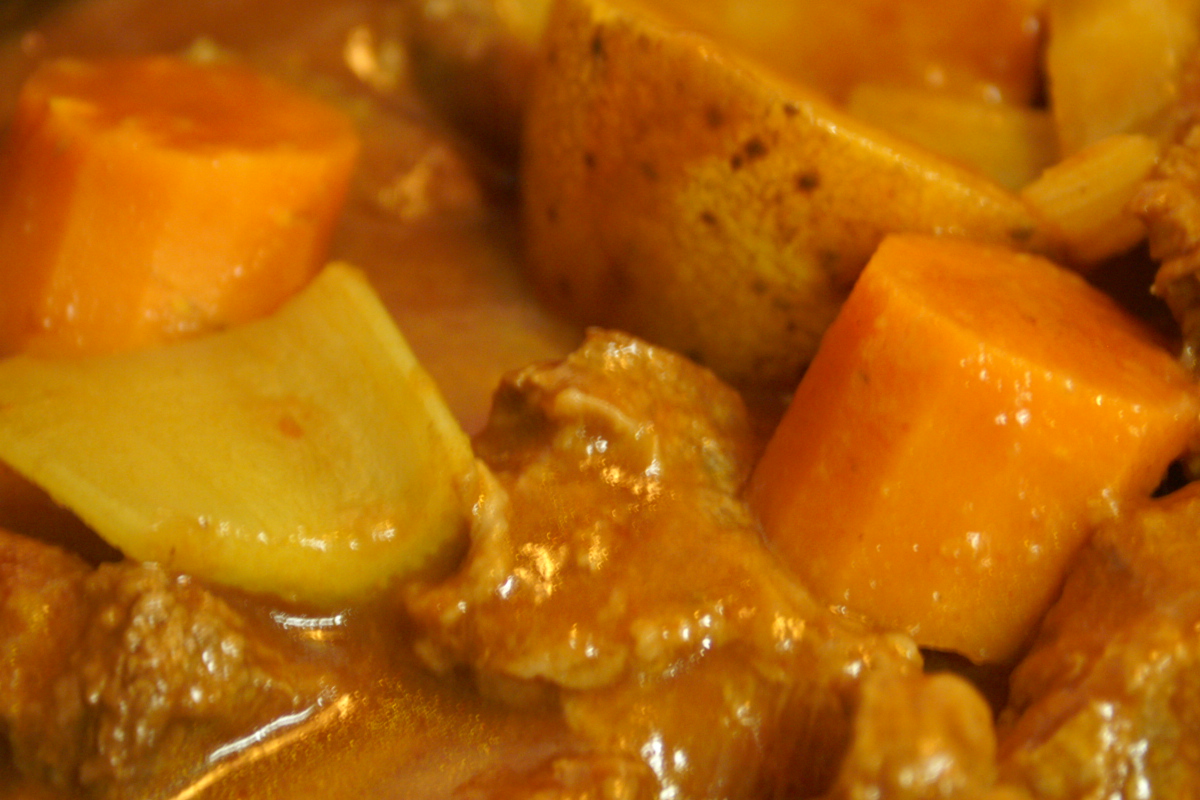I met a nutrition and dietetics student a while ago who inspired me to try an experiment.
In order to gain perspective on those who follow a raw diet, she went raw for a month (January, specifically). This idea percolated in my mind for a few weeks, and after a particularly sandwich-heavy period, I decided to take a stab at going gluten-free, a transition that a co-worker, a first-cousin-once-removed-in-law, and many, many others have made. I think it will be a valuable experience should I ever counsel patients with Celiac disease.
So beginning today, I will avoid all manifestations of wheat, barley, rye. My hypothesis, given my trial run of the past couple days, is that I will eat more vegetables, especially potatoes and sweet potatoes.
Tune in next Monday for full results.
28 February 2011
23 February 2011
Roux the Wednesday
Roux /rōō/ n. (pl. same) Cooking a mixture of fat (esp. butter) and flour used in making sauces. [from Fr. (buerre) roux ‘browned (butter).’]
Roux and me. Me and roux. We used to be pro forma facebook friends. Now we spend hours together every week. Trotter’s Café and Bakery fomented our close relationship, demanding up to two roux soups a day. Dick Trotter gave me a quick training on the basics of roux-making, but, unsatisfied with vague phrases like “consistency of wet cement” and “cook the starch out,” I turned to my classic reference materials: Charley and Weaver’s Foods: A Scientific Approach (3rd ed., ©1998) and Rombauer and Becker’s Joy of Cooking, ©1975.
Roux's goal at Trotter’s is to be a thickening agent for some of its soups: Beef Stew, Curry Cauliflower, Beer Cheese Soup, etc. The starch in flour does the heavy lifting, absorbing water and swelling proportionately. So why the butter?
According to Charley and Weaver, “When starch is used as a thickening agent, a uniformly thickened liquid without lumps is desired.” Important to a thickened yet lumpless liquid is separation of starch granules from one another. In roux, flour particles are separated with a coating of fat.
Roux must be equal parts flour and butter (by weight!) so that fat coats the flour particles evenly. The result is neither pourable (the dreaded slack roux) nor crumbly. That explains the “wet cement” consistency. And yes, the butter needs to be melted to coat the particles, but do I really have to cook it over low heat for ten more minutes, stirring constantly?
Absolutely, Rombauer and Becker declare, studding a relevant passage with arrows to emphasize the seriousness of the situation.
►Unless a roux is cooked long enough to dispel the raw taste of flour, this unpleasant flavor will dominate the strongest stocks and seasonings. And unless the flour and butter are stirred to distribute the heat and to allow the starch granules to swell evenly, they will later fail to absorb the liquid, and the sauce will be thin. ►This heated blending period is most important. Using excessive heat to try hurrying it will burn the flour, giving it a bitter taste; and it will shrink the starch, making it incapable of continuing to swell.
Forget lumps – the whole batch of Beef Stew could end up soupy as Beef Bourguignon and as bitter as tahini! Thank goodness I have not had disasters of that scale.
 |
| AlbertCahalan's rendering of Beef Stew |
02 February 2011
Seed-Saving Wordy Wednesday
My Year of Meats. I snickered when I saw the title of Ruth L. Ozeki's debut novel. A colleague (can I call the assistant director of the Healthy Foods, Healthy Lives Institute that, now that I've graduated?) had mentioned Ozeki's work, which includes her second title, All Over Creation.
I read them both, one after the other, in a rush to find out if the infertile women get a baby in the end, if the public realizes what American meat/potato production is all about, if the minor character finds happiness, how the main character deals with her Japanese heritage.
And along the way, I ran across some unfamiliar words. The following are from All Over Creation, a novel that deals with Russet Burbank potato farming and seed-saving in Idaho.
Imagine you are a seed... And then imagine the triumphant moment when you crack the crumbly crust, poke your wan and wobbling plumule head through the surface and start to unfurl..." (3, 4)
A plumule is the rudimentary bud of an embryonic plant. The 3,000 acres of Lloyd Fuller's farm would look pretty vast to such a structure. Later, said Lloyd Fuller helps his wife, Momoko, pollinate her squash.
Momoko located one of the taped [male squash flowers] and plucked it, severing the stem several inches down the peduncle... Lloyd watched as the [untaped female] flower began to unfurl, a blooming in slow motion, but of course it wasn't slow at all. Just the opposite, because the wrinkled petals, once freed, spread far more eagerly and rapidly than was normal in nature and within minutes had billowed into a raggedy-edged corolla. Inside, revealed, were the plump quadrant lobes of the stigma, sticky and receptive. Lloyd was transfixed." (115-6)
A peduncle is a stem that supports flowers. Clear enough. And a corolla is, collectively, the petals of a flower. Corolla is Latin for "little crown" and was selected as the name for a line of Toyota's compact cars because of the tradition of using variations of "crown" for their primary models, according to Wikipedia.
This procedure was carried out before "Momoko's garden was nothing but spectral stumps and stalks and mounds of tumular snow, like the site of ancient burial" (81). Latin tumulus, meaning "mound." I see of lot of that in the Twin Cities right now.
Subscribe to:
Posts (Atom)
